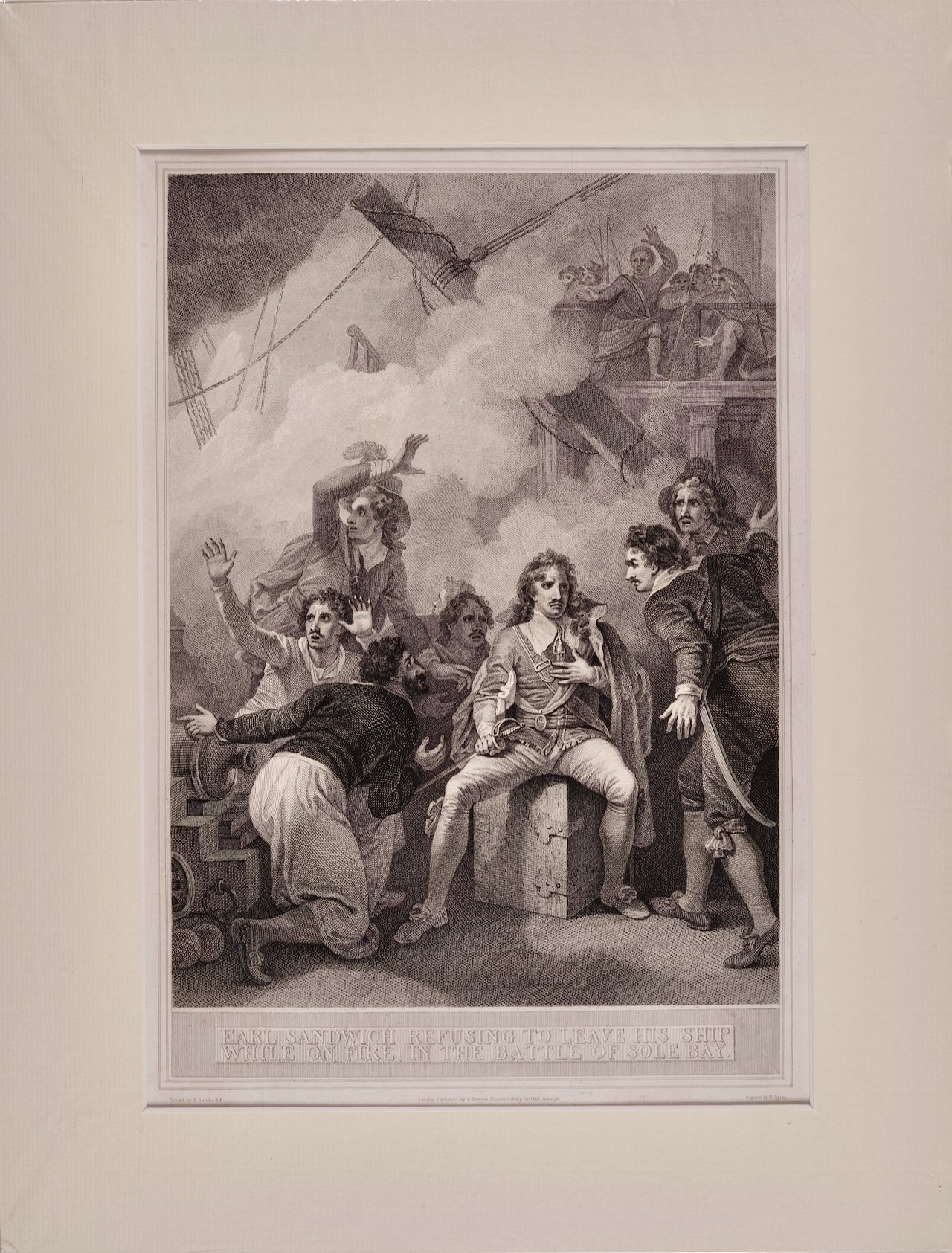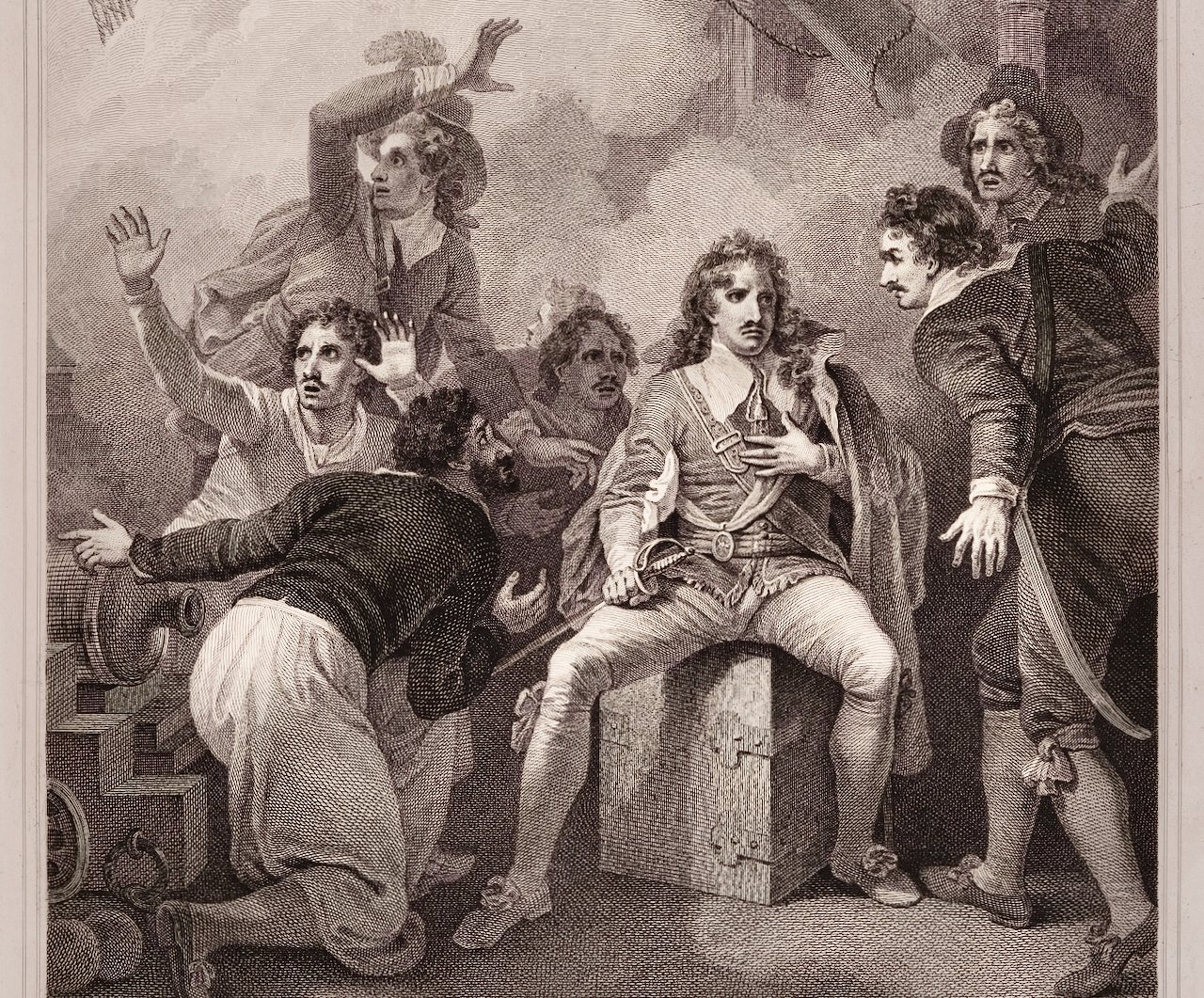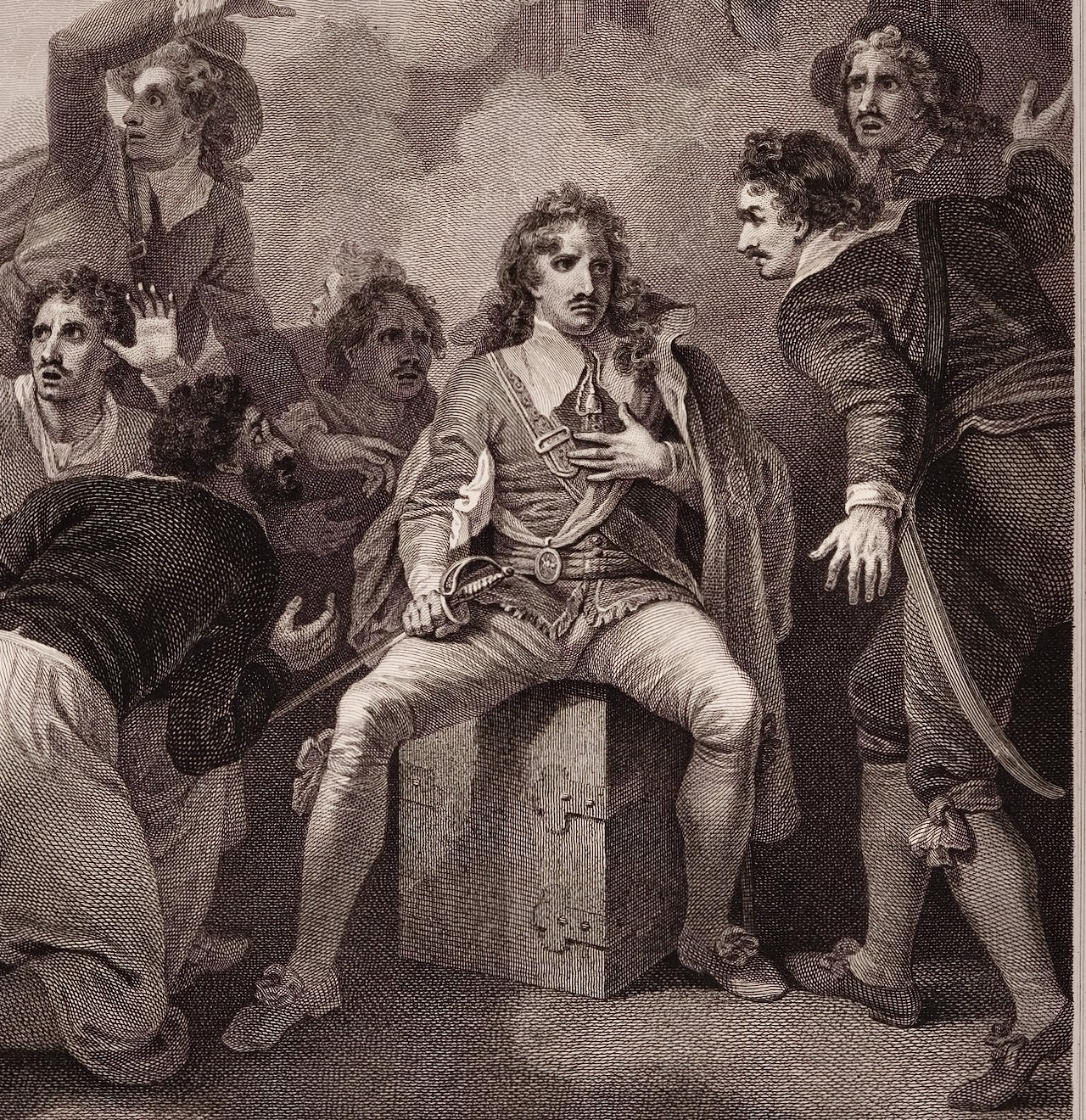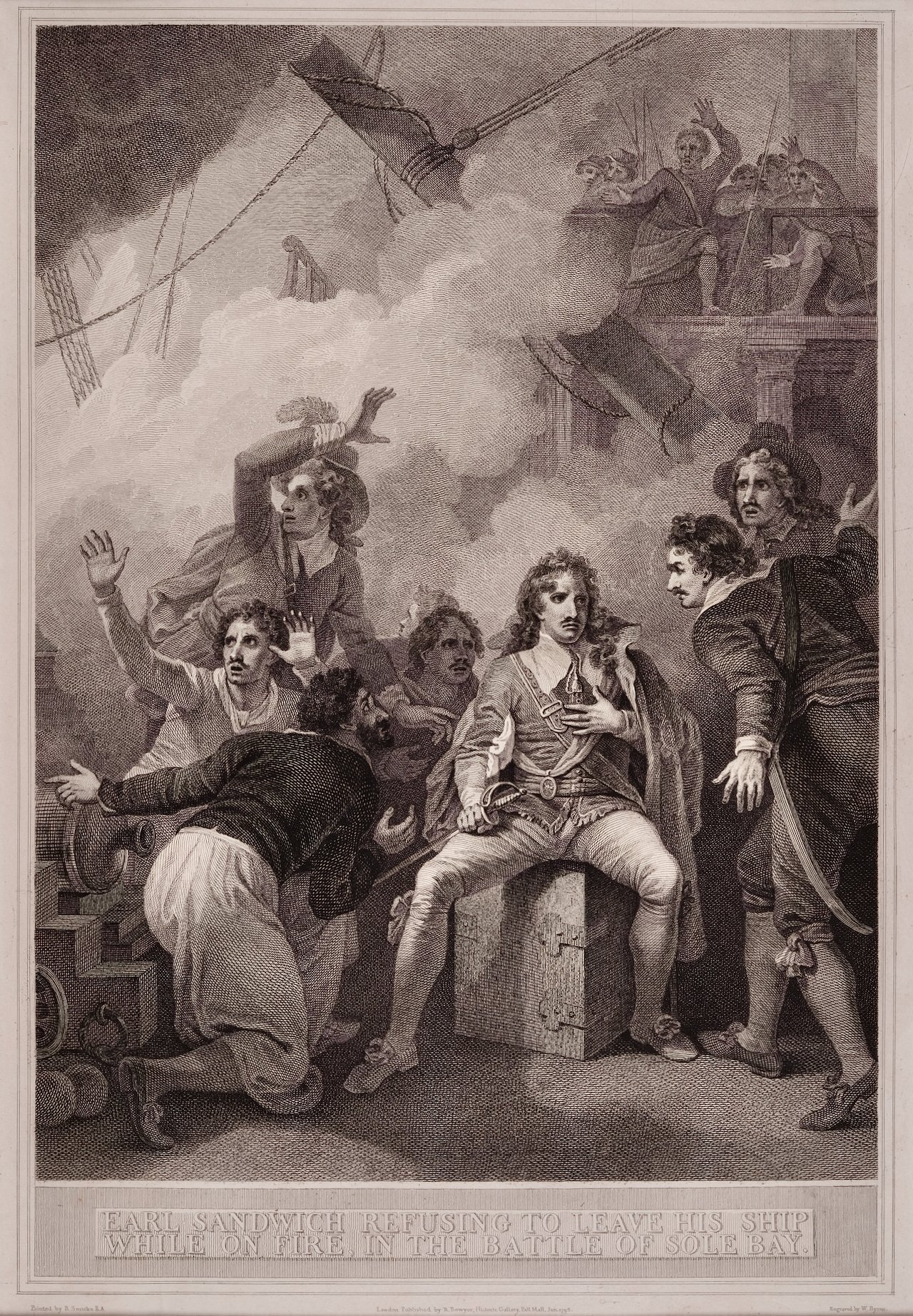The engraving depicts Captain Wallis' ship the Dolphin under attack by Tahitians in canoes who had never seen a European before. The canoe in the right foreground is a large ocean-going double-hulled canoe that is partially covered, presumably for the Tahitian king. Smoke is seen about the ship, presumably from the canons used to repel the attack. British Captain Wallis discovered Tahiti in June 1767. His discovery led to the subsequent 1st voyage of then Lieutenant James Cook who was sent in 1769 by the British Admiralty to observe the transit of Venus across the sun at what is now known as Point Venus on the north portion of the island. Cook went on to explore New Zealand and the east coast of Australia.
This is an excerpt from Captain Wallis' description of the attack: At six o’clock the next morning, we began to warp the ship up the harbor, and soon after, a great number of canoes came upon her stern. As I perceived they had hogs, fowl, and fruit on board, I ordered the gunner, and two midshipmen, to purchase them for knives, nails, beads, and other trinkets. . . . By eight o’clock, the number of canoes was greatly increased, and those that came last were double, of a very large size, with twelve or fifteen stout men in each. I observed, with some concern, that they appeared to be furnished rather for war than trade, having very little on board except round pebble stones. . . . [T]here was a universal shout from all the canoes, which at once moved towards the ship, and a shower of stones poured into her on every side. . . . When the great guns began to fire, there were not less than three hundred canoes about the ship, having on board at least two thousand men; many thousands were also upon the shore. . . . Among the canoes that were coming toward the bow, there was one which appeared to have some Chief aboard, as it was by signals made from her, that the others had been called together: it happened that a shot, fired from the guns forward, hit this canoe so full as to cut it asunder. As soon as this was observed by the rest, they dispersed with such haste that in half an hour there was not a single canoe to be seen.
The engraving is printed on laid chain-linked paper. The sheet measures 9.5" in height and 15.25" in width. There is a tiny chip at the lower edge of the sheet and three at the upper edge. The print is otherwise in very good condition.
Alexander Hogg was an 18th and early 19th century publisher of illustrated books of architectural and historical prints, as well as maps. His publishing house was located in London at the Kings Arms on Paternoster Row.



























